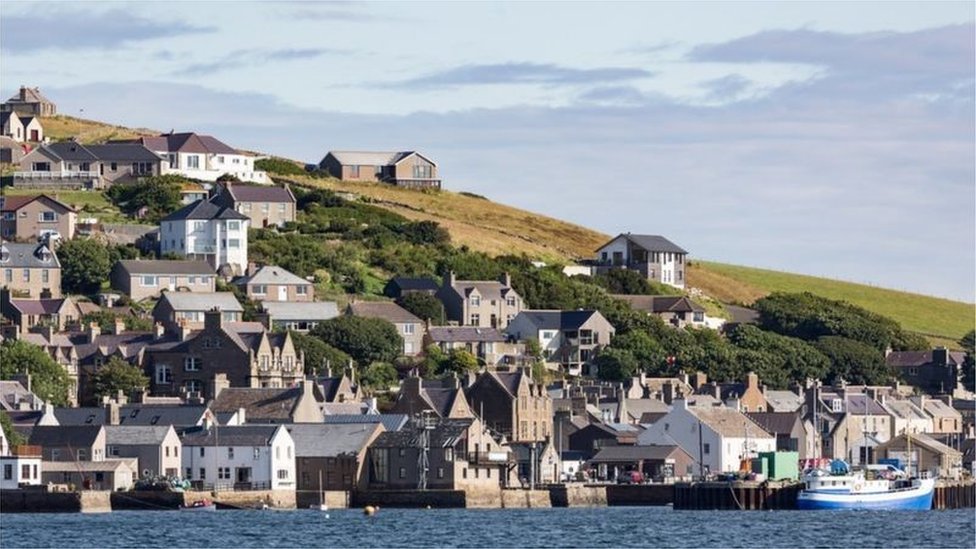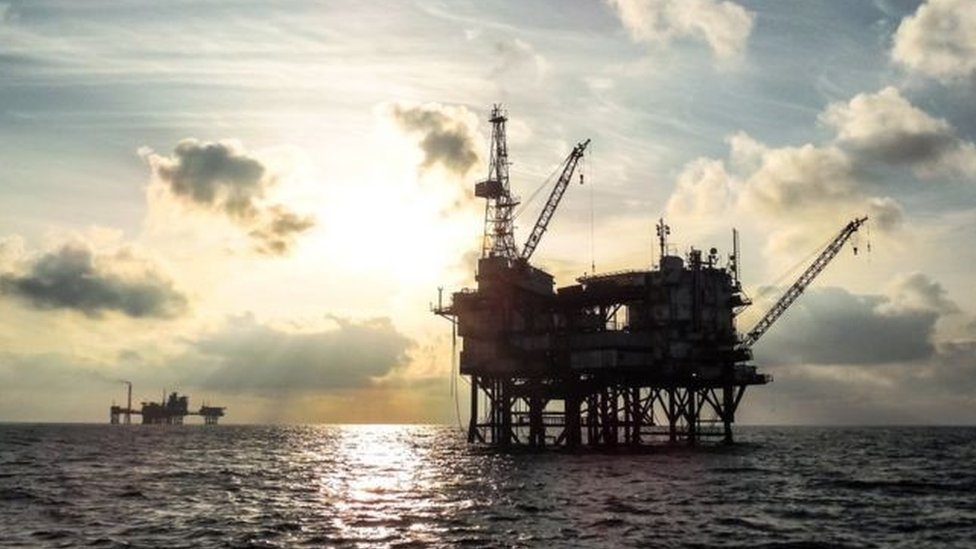
Business/economy editor, Scotland

- As northern isles rattle the independence cage, a study of Orkney's economy sheds light on the distinctive nature of island prosperity, and points to some of the challenges small island groups might face.
- Orkney has strengths in renewable energy and tourism, but it points the way on Scotland's demographic challenge.
It wasn't to make the case for independence that Orkney commissioned a close look at its economy. It was to better understand where its opportunities and challenges lie.
But with Shetland joining Orkney this month in rattling the independence cage, and calling for more autonomy, the study has some interesting things to say about the way small island groups differ from the mainland.
Anyone who knows them won't be surprised to learn of those differences with the mainland, and with other islands. This report adds some numbers.
The study was commissioned by the islands council from the Fraser of Allander economic institute at Strathclyde University. Published last week, it shows economic strengths for such a small population.
While Orcadians are well placed to catch the rising demand for wellbeing lifestyles and renewable energy, they are also ahead of the rest of us on demographic challenges.
With renewable energy now a global force, Orkney's place in it is as a significant research centre. The Pentland Firth, with all that wave and tidal, is the place to go for experimentation and testing of prototypes.
The flipside is that islands are far more dependent on fossil fuels, with expensive oil heating pushing a high proportion of households into fuel poverty.
Self-reliant
Islanders are big on self-employment and micro-businesses. Their productivity per head ranks in the top five local authorities in Scotland.
With a population of 22,200, there are around 1,500 businesses on the island. More than 90% have fewer than 10 employees.
Orcadians are a bit less likely to have advanced qualifications as the rest of Scotland, but they work flexibly. The study (warning throughout of some ropey data) estimates 11,000 jobs, of which around 5,000 are part-time.
One of the most striking findings is a big gender gap on earnings. Men earn 9% more than the Scottish average. Full-time female earnings are 17% lower than the national figure. Why? It's suggested that offshore pays bigger, and care jobs done by women do not.

Orcadians looked to the public sector to provide 31% of their employment in 2016, compared with a Scottish figure of 25%. There's not much manufacturing, beyond food and drink processing (think cheese and whisky), and apart from the Flotta oil terminal, it lacks big private employers.
Only 10 private firms employ more than 50 people: none more than 250. Across Scotland, large enterprises account for nearly half of private sector employment.
Fisheries off Orkney are only half as important to employment as in Shetland, and farming is roughly twice as important.
Being small allows for specialisation, argue the Strathclyde economists. But the flipside of that highlights a challenge for any smallish economy that wishes to break from bigger ones - that they are more vulnerable to shocks.
And those dependent on livestock farming in Scotland face a severe shock from tariffs if there's a no-deal Brexit at the end of this year.
Healthy girls
The clearest warning light is on population. It's getting older.
In 2017, at 47, the average age was already five years ahead of Scotland. The projection is of little change to the total, but by 2043, the number of working age will be down 8% and those over pensionable age will be up 28%.
In Scotland, the equivalent projection is for a steady working age population, and a 23% rise in those getting a pension.
So Orkney is an advanced example of the demographic problem the whole country faces.
Looked at another way, it's good that people live longer, and in Orkney, longer lives are being lived healthily: girls born in recent years are projected to live longer, healthy lives than any other part of Scotland, by a margin of three years.
High costs
So what does the report tell us about independence?
That wasn't the remit. But it shows that a simple measure of output, or Gross Domestic Product per head, can make a community seem well off: in 2018, Orkney's was £28,600, level with the UK and 10%, or £2500, higher than Scotland.
Only Edinburgh, Aberdeen, Shetland and Glasgow have higher levels. But the figures also show much of the value generated on the islands then departs.
That figure for Scotland is often deployed to make the case for independence - either to argue that Scotland is well off, or that it should be better off. But the Orkney example illustrates its limitations.
At least as significant is the dependence on taxation and spending transfers in and out of the islands - another contentious part of the independence argument for Scotland.
In the islands' case, we don't know how much tax it raises. But government's revenue grant to Orkney is £3,205 per head - £200 below Shetland and £900 less than the Western Isles, but a lot higher than the Scottish average of £1981.
The costs of operating small schools, hospitals and health boards, with higher transport costs, would be a challenge for island groups toying with independence.
In the short term, however, the report notes a more immediate challenge from the coronavirus crisis, blighting business activity, travel and tourism.
"light" - Google News
September 20, 2020 at 10:36PM
https://ift.tt/3kAQNfq
Study of Orkney economy sheds light on island prosperity - BBC News
"light" - Google News
https://ift.tt/2Wm8QLw
https://ift.tt/2Stbv5k
Bagikan Berita Ini















0 Response to "Study of Orkney economy sheds light on island prosperity - BBC News"
Post a Comment